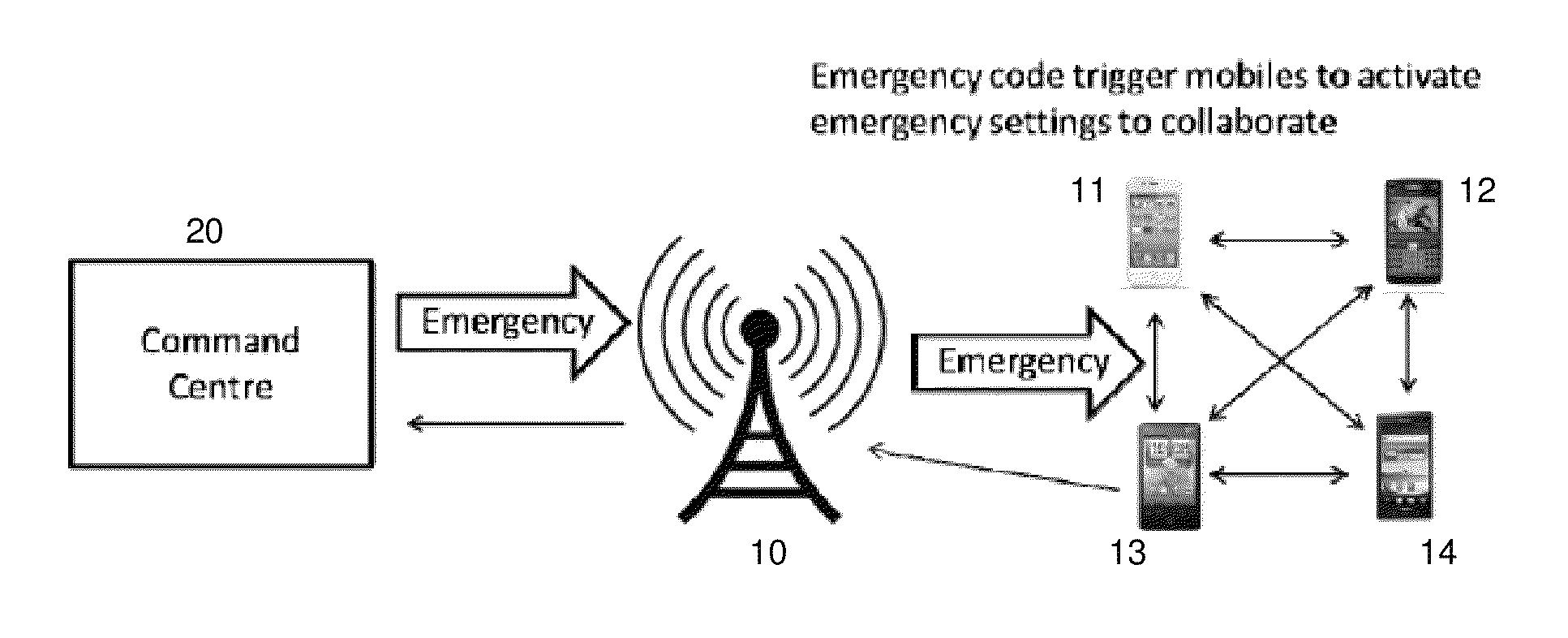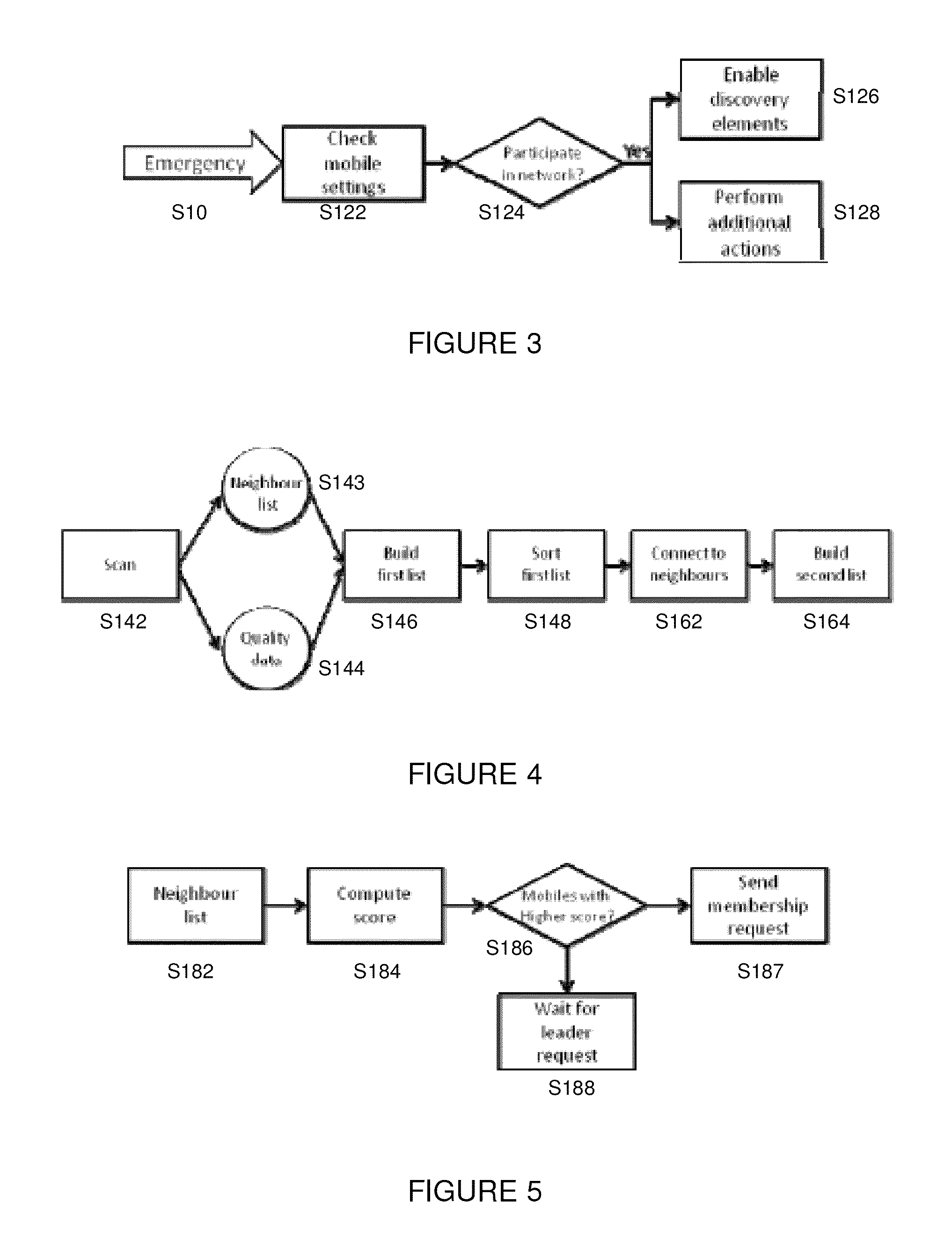Automatic ad-hoc network of mobile devices
a mobile device and network technology, applied in the direction of connection management, wireless commuication services, broadcast service distribution, etc., can solve the problems of system overload and unavailability, large demand on mobile infrastructure resources, and the effect of reducing the overall energy consumption of each group
- Summary
- Abstract
- Description
- Claims
- Application Information
AI Technical Summary
Benefits of technology
Problems solved by technology
Method used
Image
Examples
first embodiment
[0097]The static case is a simplified situation mainly for explanatory purposes. However, it may be valid in real life if the emergency is relatively short in duration (e.g. a few hours), and the movement of the members is severely restricted (e.g. to a single floor of a building).
[0098]S10: Trigger (emergency code) to activate the crisis event management system.
[0099]This emergency code, broadcast from the base station 10 in FIG. 1, is capable of being recognised by each mobile device 11-14 without user action. To enable this, each mobile device may be configured to recognise and respond to the emergency code, either as part of the wireless cellular network configuration, or within the specifications of the wireless cellular standard in use. The emergency code may be broadcast along with a textual or audio message intended for the users.
[0100]S12: Initialize settings to users' preferences or standard default
[0101]FIG. 3 illustrates this part of the procedure. Upon receiving the tri...
second embodiment
[0173]In the dynamic case, two additional events have to be taken into account.[0174]A time-out in the communication with the leader makes the member realize that the leader is either no longer in range or no longer functional. In this event, the member restarts the procedure from S14 in order to join a new leader.[0175]When a member phone detects that its battery has reached a level lower that a prescribed threshold, with the meaning that it will soon stop operating, the member phone will send the mobile operator, via the leader, its status and its current physical location, in the form of a message like “Terminal x: disconnecting due to low battery. Last location=(lat,long)”. It means that communication is terminated “normally”.[0176]When a member phone detects that its battery has reached a level lower that a prescribed threshold, with the meaning that it will soon be unable to perform its function of leader, it will defer leadership to the highest scoring neighbouring mobile dev...
PUM
 Login to View More
Login to View More Abstract
Description
Claims
Application Information
 Login to View More
Login to View More - R&D
- Intellectual Property
- Life Sciences
- Materials
- Tech Scout
- Unparalleled Data Quality
- Higher Quality Content
- 60% Fewer Hallucinations
Browse by: Latest US Patents, China's latest patents, Technical Efficacy Thesaurus, Application Domain, Technology Topic, Popular Technical Reports.
© 2025 PatSnap. All rights reserved.Legal|Privacy policy|Modern Slavery Act Transparency Statement|Sitemap|About US| Contact US: help@patsnap.com



